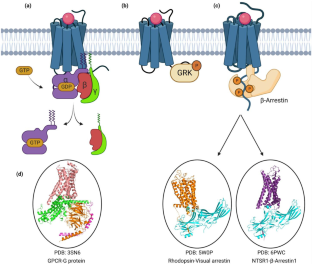Understanding the Molecular Regulation of Serotonin Receptor 5-HTR1B-β-Arrestin1 Complex in Stress and Anxiety Disorders
Abstract
The serotonin receptor subtype 5-HTR1B is widely distributed in the brain with an important role in various behavioral implications including neurological conditions and psychiatric disorders. The neuromodulatory action of 5-HTR1B largely depends upon its arrestin mediated signaling pathway. In this study, we tried to investigate the role of unusually long intracellular loop 3 (ICL3) region of the serotonin receptor 5-HTR1B in interaction with β-arrestin1 (Arr2) to compensate for the absence of the long cytoplasmic tail. Molecular modeling and docking tools were employed to obtain a suitable molecular conformation of the ICL3 region in complex with Arr2 which dictates the specific complex formation of 5-HTR1B with Arr2. This reveals the novel molecular mechanism of phosphorylated ICL3 mediated GPCR-arrestin interaction in the absence of the long cytoplasmic tail. The in-cell disulfide cross-linking experiments and molecular dynamics simulations of the complex further validate the model of 5-HTR1B-ICL3-Arr2 complex. Two serine residues (Ser281 and Ser295) within the 5-HTR1B-ICL3 region were found to be occupying the electropositive pocket of Arr2 in our model and might be crucial for phosphorylation and specific Arr2 binding. The alignment studies of these residues showed them to be conserved only across 5-HTR1B mammalian species. Thus, our studies were able to predict a molecular conformation of 5-HTR1B-Arr2 and identify the role of long ICL3 in the signaling process which might be crucial in designing targeted drugs (biased agonists) that promote GPCR-Arr2 signaling to deter the effects of stress and anxiety-like disorders.


 求助内容:
求助内容: 应助结果提醒方式:
应助结果提醒方式:


